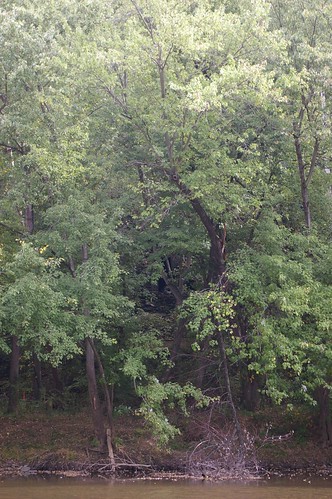
I've written previously about the famous Jug Bridge over the Monocacy River, both as it was in the past and as it is today. I've also written about the concrete arch bridge that was built to replace it in 1944.
I've never, though, written about the eastern abutment of the Jug Bridge, nor have I been able to locate any non-historical photographs of it. The above photograph was all that I'd been able to get documenting this bit of history, and I wasn't even sure that it showed anything.

The road is still in relatively good shape, given that it hasn't been maintained since 1944. This view is looking back toward the end of the public road.
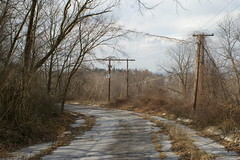
It gradually becomes more overgrown.
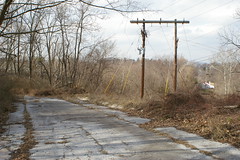
This is the end of the road, the eastern abutment of the bridge. The road made a sharp right to cross the bridge just beyond the left edge of the picture. The small white building seen to the right was the toll house for the bridge.
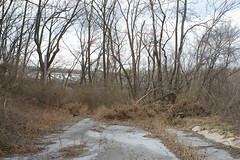
The utility line (click on the picture for a larger version) marks the left (south) side of the old bridge abutment.
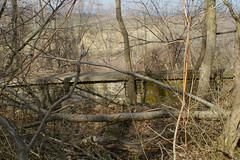
This wall formed the north side of the bridge.
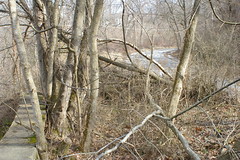
This photograph was taken from the spot shown in the preceding one. It helps illustrate how the road curved before crossing the river.

This photograph, taken from approximately the same spot as the preceding one, shows the former location of the "jug" for which the bridge was known, and which now sits in a park in Frederick. It sat on the round, semicircular stone pad, about a third of the way up the image, now covered by moss.

This is the north wall of this abutment. Note the concrete arch bridge that replaced the Jug Bridge in the background, as well as the replacement's replacement.
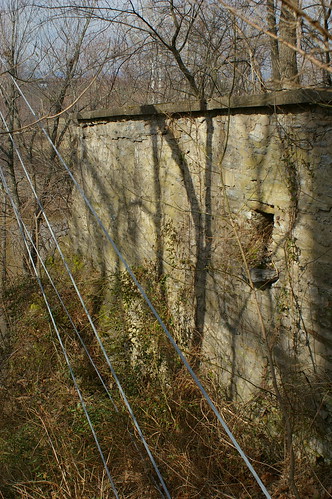
This is what remains of the south wall of this abutment.
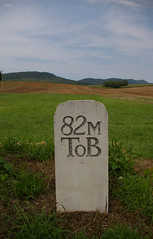
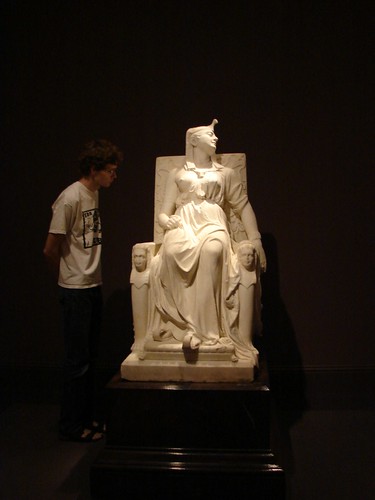
1 comment:
Do you have any other info o facts about the toll house/ tavern there. The white building i think is seen in one photo. descendants of mine worked and owened it at one time. I'd love to see closer pic's. is it pretty hidden?
Thanks, Tennille Winterstein
Post a Comment